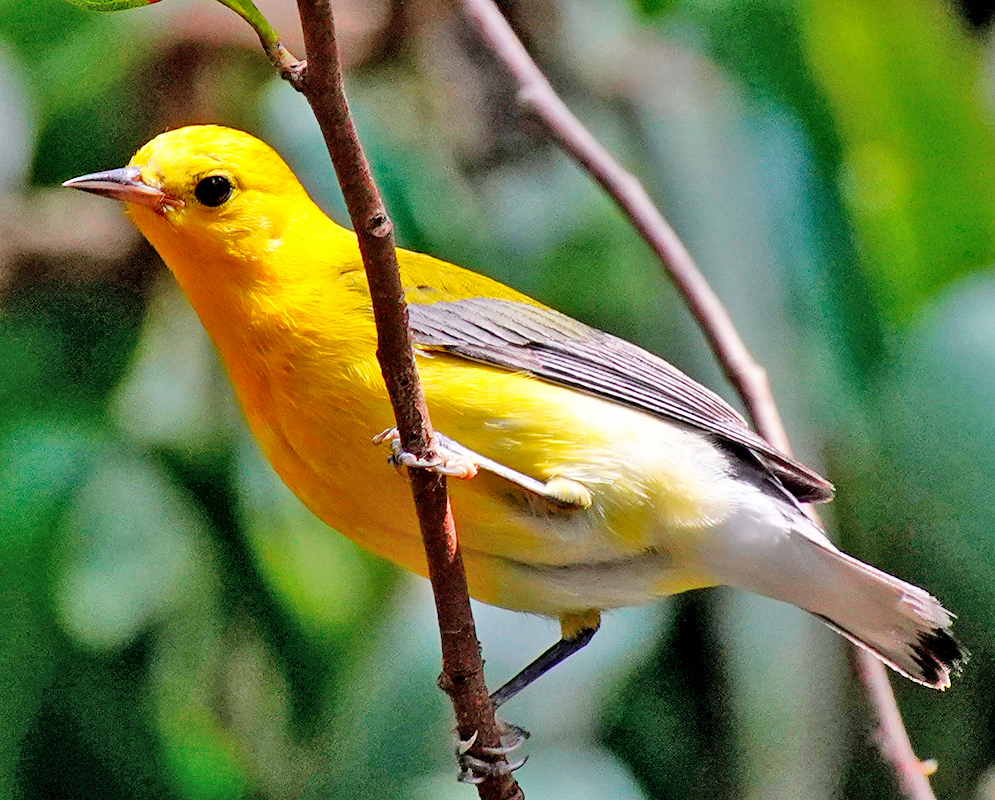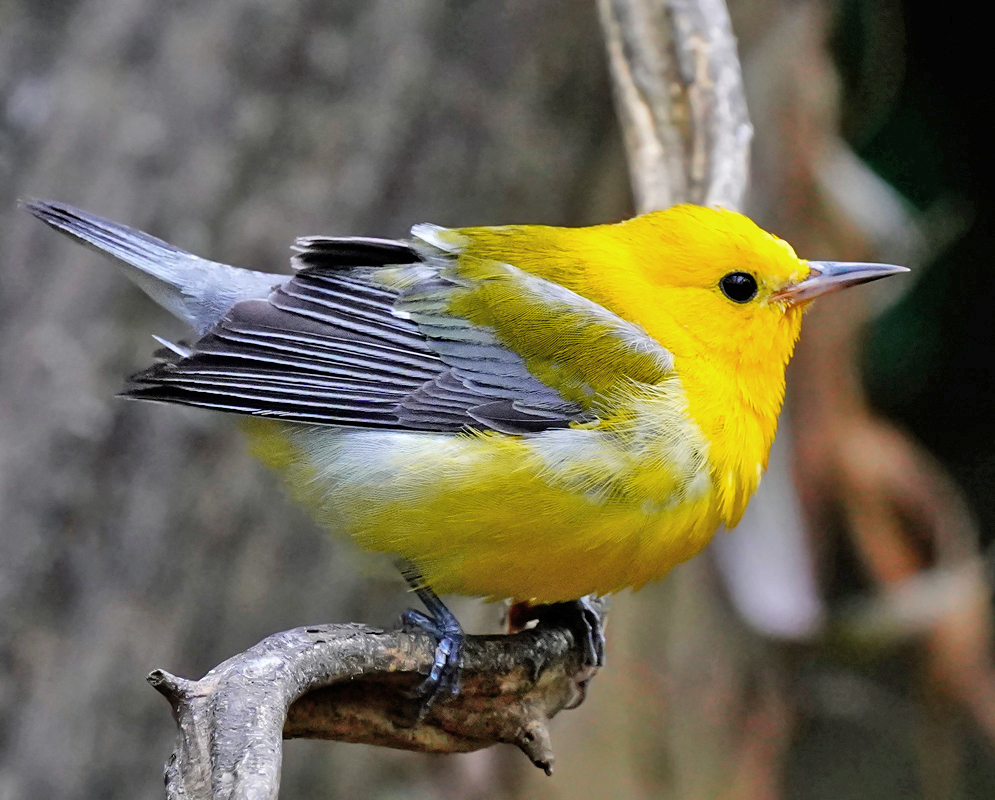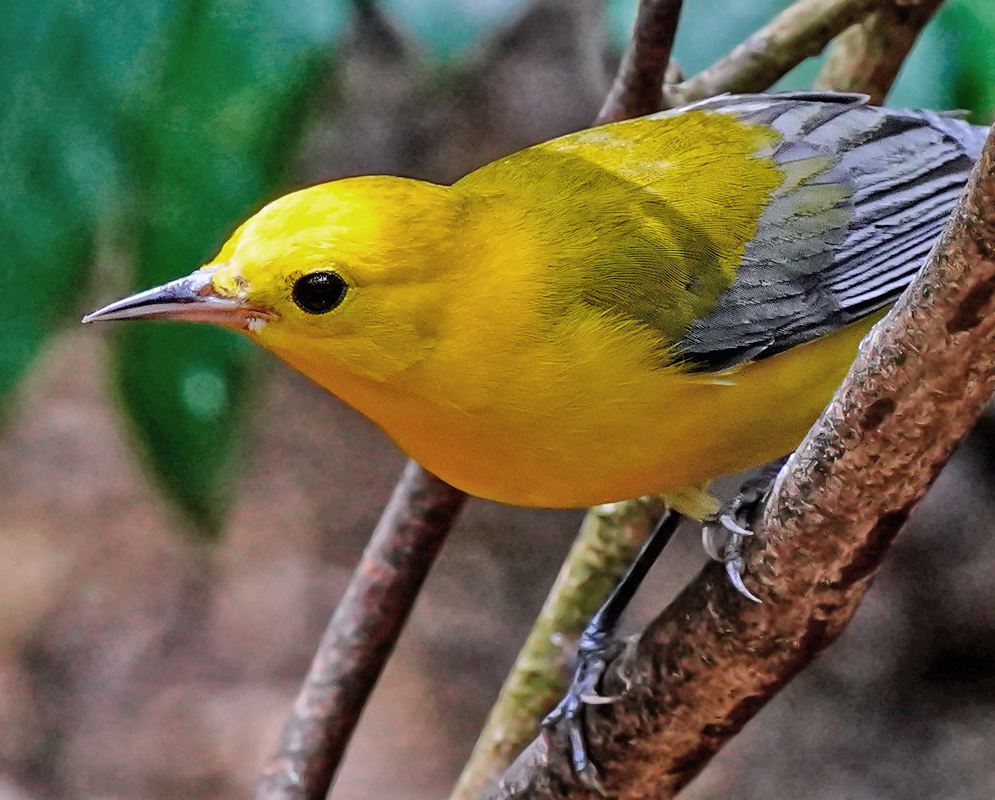This post has 11 Simple Fields-fields attached. Show fields.

Protonotaria citrea is a small brightly colored songbird native to North America. It prefers low-lying forested wetlands, particularly swamps and bottomland hardwood forests with slow-moving water, as well as areas with standing dead trees which provide cavities for nesting. The adult males display a vivid yellow-orange head and chest, contrasting with bluish-gray wings and tail, and white undertail coverts, while females and juveniles exhibit slightly duller coloration. During the breeding season, it is often seen foraging close to the water, hopping along branches or clinging to tree trunks as it searches for insects, spiders, and other small invertebrates, which make up the bulk of its diet. This bird’s unique nesting habit involves using natural or artificial cavities, a rare trait among warblers, and it readily accepts man-made nest boxes. It is migratory, wintering in mangrove swamps and lowland forests across Central America, northern South America, and the Caribbean, where it occupies habitats similar to those found in its breeding range. Invasive species such as the Brown-headed Cowbird, which parasitizes its nests, also pose challenges, as cowbirds lay their eggs in warbler nests, leading the warbler to raise cowbird chicks at the expense of its own.





